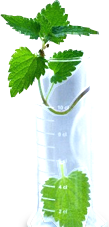



Author(s): Vijaya S. Gulalkayi, Chandrashekhar G. Unakal, B. B. Kaliwal
Research efforts are needed to design and improve the process, which would produce sustainable and economically feasible transportation fuel. The present investigation was undertaken to determine the availability of carbohydrates in hydrolysates derived from different substrates Acacia arabica, Delbergia sisso, Peltophorum Pterocarpur and Perkia biglobosa pods, in the production of ethanol. The enzymatic hydrolysis of the substrates has yielded the significant amount of reducing sugar from the substrates by comparing the effect of enzymes on hydrolysis. The Acacia arabica pods has showed the higher production of reducing sugars when treated with 4% a-amylase whereas Peltophorum pterocarpum has produced lowest yield of reducing sugar at 4% a-amylase enzyme. The optimum temperature required for the activity of a-amylase enzyme in the production of reducing sugars using different substrates were revealed that at 30oC the Acacia arabica has yielded maximum sugars whereas the Perkia biglobosa has showed the minimum yield of reducing sugar. The optimum period of enzyme activity in the production of reducing sugars using different substrates was indicted that the Acacia arabica has showed the maximum yield of reducing sugars during the incubation period of 24 hours whereas minimum yield was observed in Perkia biglobosa. The optimum incubation period of Saccharomyces cerevisiae in the production of ethanol has showed that the seven days of incubation has yielded maximum amount of ethanol using the substrate Acacia arabica